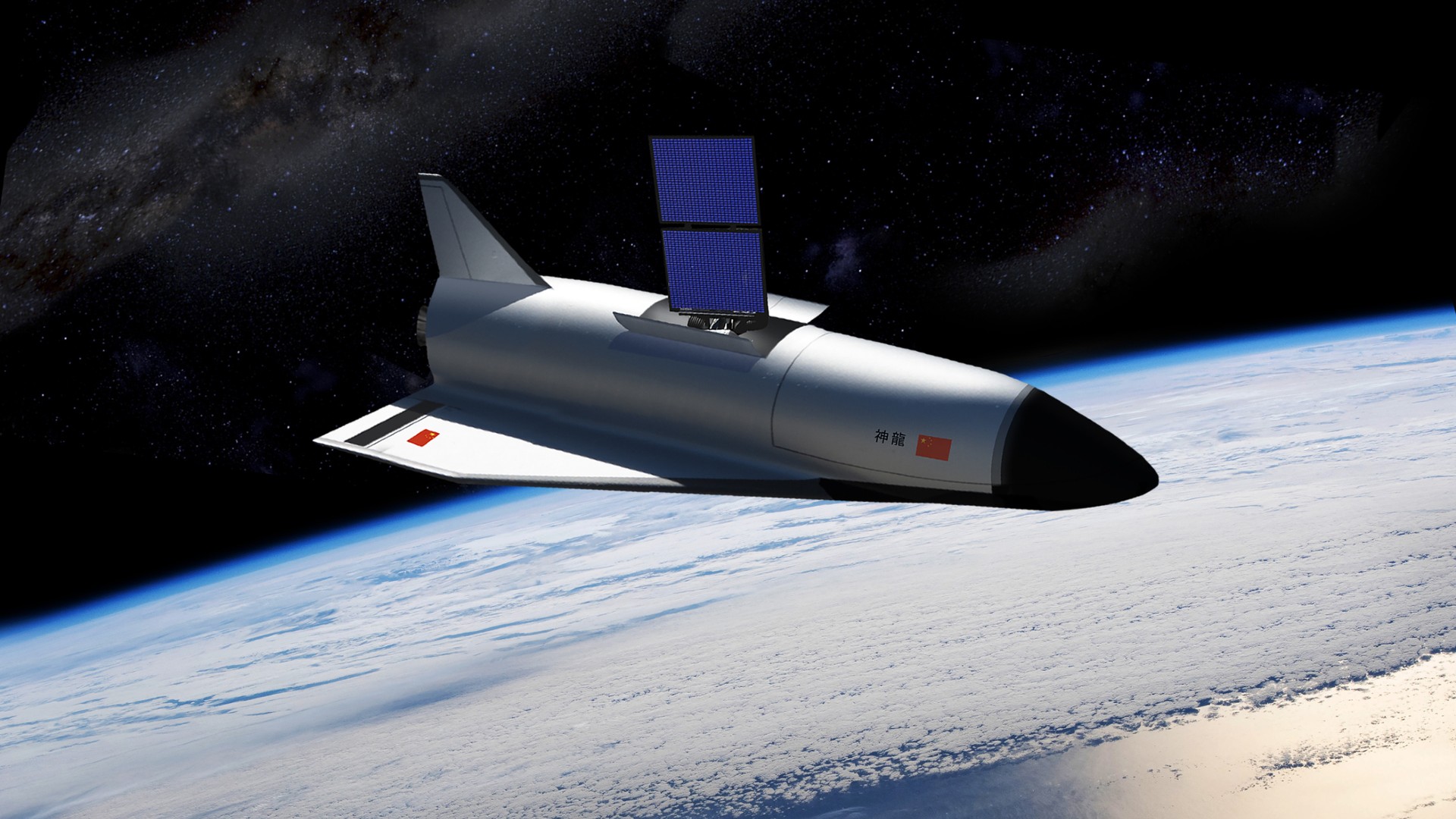China launches secret space plane on 3rd-ever mission
Little is known about the spacecraft or its mission.

China has launched its reusable space plane for the third time.
A Long March 2F rocket lofted China's experimental spacecraft from the Jiuquan Satellite Launch Center on Thursday (Dec. 14) to conduct space science experiments and "provide technical support for the peaceful use of space," according to Xinhua news.
The launch comes just seven months after the spacecraft's last mission, a much quicker follow-up compared to the first and second launches which happened 23 months apart, SpaceNews reports.
Hours prior to the secretive spacecraft's launch, SpaceX stood down from the 7th planned liftoff of the U.S. Space Force's own X-37B reusable space plane, and even removed the Falcon Heavy rocket containing it from the Kennedy Space Center launch pad. The mission, known as USSF-52, was scrubbed on Wednesday (Dec. 13) to "perform additional system checkouts." Exact reasons for this delay remain unknown, and a new date has yet to be set for launch.
Related: China's mysterious space plane returns to Earth after 9-month orbital mission
Much like the X-37B, little is known about China's reusable space plane, subbed Shenlong, or "Divine Dragon." From what bits of information are available to the public, though, the spacecraft appears to be used for testing new payloads and orbital operations. It launches vertically atop a rocket, conducts its mission and then lands horizontally on a runway similar to NASA's space shuttle.
The close timing of the two space plane launches is also not coincidental, according to General Chance Saltzman, U.S. Space Force's Chief of Space Operations. Speaking at the Space Force Association's Spacepower Conference this week, Saltzman said China and the U.S. are both very interested in each other's space planes.
Get the Space.com Newsletter
Breaking space news, the latest updates on rocket launches, skywatching events and more!
"Because it is a capability; the ability to put something in orbit, do some things, and bring it home and take a look at the results is powerful," Saltzman said, according to Air and Space Forces Magazine. "And so these are two of the most watched objects on orbit while they're on orbit. It's probably no coincidence that they're trying to match us in timing and sequence of this."
The last flight of China's robotic space plane lasted 276 days and saw the spacecraft eject an unknown object into orbit. It was speculated at the time that the object was either a small satellite designed to inspect Shenlong or a service module that was no longer needed.
Join our Space Forums to keep talking space on the latest missions, night sky and more! And if you have a news tip, correction or comment, let us know at: community@space.com.

Brett is curious about emerging aerospace technologies, alternative launch concepts, military space developments and uncrewed aircraft systems. Brett's work has appeared on Scientific American, The War Zone, Popular Science, the History Channel, Science Discovery and more. Brett has English degrees from Clemson University and the University of North Carolina at Charlotte. In his free time, Brett enjoys skywatching throughout the dark skies of the Appalachian mountains.









